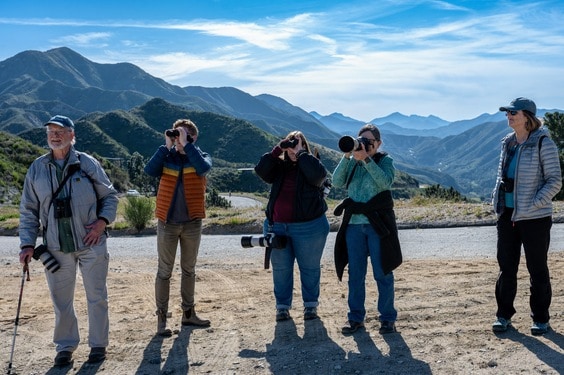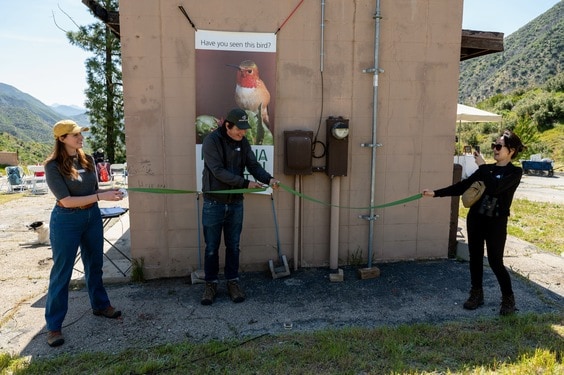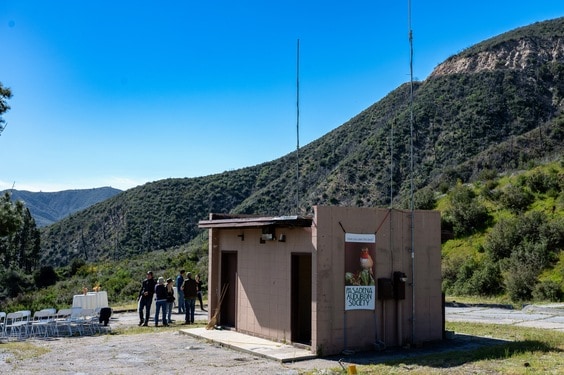By Chris Spurgeon, Program Chair, Pasadena Audubon Society
It seems impossible that twice every year the average person could be in the midst of one of the biggest, most spectacular, events in all of nature and not even know it. But that’s the case with humans and bird migration. Every spring more than three BILLION birds travel across North America from wintering grounds in the American south, Mexico, and Central and South America to breeding areas in the US and Canada. An even bigger population (since it now includes birds born that summer) heads back south that autumn. Where I live, just north of Los Angeles, more than half a million birds might migrate past in a single day.
Part of the reason we may not notice these movements is that the majority of birds make their amazing migratory journeys at night while we’re sound asleep. But they’re also spread out over a wide area. A few birds here, a few birds there, it’s easy not to notice. All this makes it harder for we humans to study migrating birds. But there’s a unique, recently discovered spot in Southern California where observing migrating birds by the thousands is easy.
Bear Divide is a picturesque area in the San Gabriel Mountains, about 30 miles north of downtown Los Angeles, and it’s one of the very best spots in California to see migrating songbirds.

Every spring, birds migrating north through the Los Angeles area are faced with the challenge of flying up and over the San Gabriels before they can continue their journeys north. Birds aren’t stupid; they naturally look for the easiest way over the mountains. In this case it’s by flying up one of several valleys in the San Gabriels that leads to Bear Divide, a natural gap in the mountains. That spot — smaller than a football field — acts as an extraordinary concentration point for the birds. Standing there early on a spring morning it’s possible to see thousands, maybe even tens of thousands, of birds stream past.
It’s only been in the past few years, after a bird researcher just happened to be at Bear Divide on a morning when spring migration was in full force, that scientists and bird watchers have been flocking to the spot between March and June, hoping to be there on one of the spectacular mornings. For birders, it’s a chance to witness the beauty and excitement of birds flying past. But for researchers, it’s an opportunity to learn more about migration.

Throughout the spring migration season, researchers stand watch at Bear Divide, counting the numbers of birds flying by, and recording which species are migrating that day. They also capture a sample of passing birds in nets and carefully record their size, weight, and condition before releasing them, unharmed, to continue on their way.
As important as that data is, it’s just a snapshot. What we really want to do is follow a bird throughout its whole migratory journey. Thanks to a recent grant from the Sonoran Joint Venture (SJV), we are a step closer to doing that.
The SJV Awards Program recently funded a proposal by the Pasadena Audubon Society to install a Motus electronic tracking station at Bear Divide as part of the collaborative effort to expand the Motus network. Motus (Latin for “movement”) combines tiny radio transmitters with tracking stations scattered throughout the countryside. Whenever a bird wearing a Motus tracker flies within several miles of any of the Motus tracking stations (there are currently more than 40 stations in California, and more than 1,500 scattered throughout North America), their passage is detected and recorded, and the data shared with scientists worldwide. Right now, researchers at Bear Divide are attaching the tiny transmitters to captured migrating birds, and the Bear Divide tracking station is patiently listening for signals from any migrating birds that may be wearing transmitters attached by scientists as far away as Alaska or South America.

The Motus system is still in its infancy in the West, and right now there are many more tracking stations than birds wearing Motus transmitters in the eastern half of the continent. But that’s changing! The number of stations in California will more than double this year, and growth is expected to rise even faster throughout the remainder of the decade. With each station that’s added, and each additional bird wearing a transmitter, the entire network becomes more valuable. Through providing funding and technical support, the SJV is facilitating this amazing learning opportunity.

